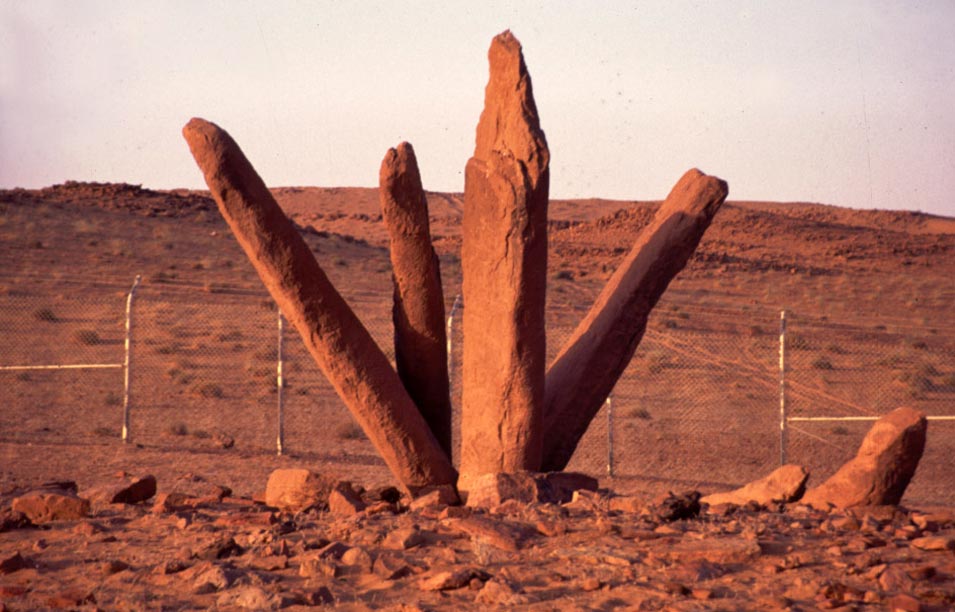Aramco Expats, an online blog that is a resource for current and former Saudi Aramco expatriates and their families, recently published a series of excellent blog posts on the seven wonders of the Arabia – the best heritage sites and historical places in the Kingdom.
In the final post of the series of seven, Aramco Expats chose the “Stonehenge of Saudi Arabia,” Ar Rajajil near Sakakah, Al-Jawf Province, on the edge of the Nafud desert in the northwest corner of the Kingdom bordering Jordan.
The mysterious structures sit along ancient trade routes that linked the Levant and Egypt with southern Arabia, Ar Rajajil “reminds us of vanished cultures from the Chalcolithic (Copper) and Bronze ages four to five thousand years ago and of the dramatically different climate conditions that obtained on the Peninsula back then,” Aramco Expats writes of the structures.
There are 54 groupings of stones at Ar Rajajil. Distributed among them are 30 pillars measuring nearly 10 feet in height and 30 inches across and weighing five or so tons apiece.
“Ar Rajajil poses countless mysteries to us moderns, few of which have been answered as yet to anyone’s satisfaction. In part this is because, until 50 or so years ago, archaeologically speaking, Saudi Arabia was among the least-explored countries in the world, this despite its being home to over 4,000 archaeologically significant sites, some 1,500 examples of rock art among them.
“People have been pondering the history and meaning of England’s Stonehenge for hundreds if not thousands of years; meanwhile, in comparison, people have been trying to unravel the secrets of Ar Rajajil for just over half a century. That leaves a lot of catching up to do, and the Saudi Commission for Tourism and National Heritage (SCTNH) has been leading a broad and determined effort to close knowledge gaps like this in its ancient heritage in cooperation with archaeological teams from within the Kingdom and from around the world, including, in the case of Ar Rajajil, a highly-skilled team from Germany.
Still today, very little is known about the structure’s original purpose, the motivation for erecting them, and their meaning.

Archaeologists do not know much about Al-Rajajil
“Considerable research has been done trying to identify the standing stones of Ar Rajajil as a sort of ancient astronomical observatory. Supporters of this interpretation claim that no religious purpose has been established for them, arguing instead that they were placed in the manner they were in order to gauge the movement of the planets and the stars. For an agrarian society such as what existed there 5,000 years ago, being able to determine the cycles of the seasons was critically important to survival. In truth, nobody can say for sure exactly why the standing stones are there. It is commonly accepted that megalithic sites such as Ar Rajajil were built during a period of agricultural revolution when agricultural activities became paramount and such knowledge was essential,” AramcoExpats.com writes.









